Thanks to advances in design, manufacturing, and technology, fans no longer have to have blades. It used to be that all fans needed blades to move air, and then Dyson started selling their iconic bladeless fans. Not in 2021, there are a number of companies that sell great working, great looking fans without spinning blades.
If you are shopping for a ceiling fan, you are out lot luck, they still all have blades!
Why Buy A Bladeless Fan?
These modern-looking fans have a lot going for them including…
- Cool, modern designs
- Quieter operation than standard fans
- Smoother, less choppy, air flow
- Easier to clean
- Safe for pets and children
Personally, I bought my first Dyson bladeless fan in 2010, shortly after it was released in 2009. I was enamored with the design and the science behind the air multiplier technology. I’ve owned a few fans since then and gifted a number of them, mostly the popular Dyson AM06. Having used them for about a decade now, I very much remain a fan of Dyson’s fans specifically and bladeless fans in general.
Top Bladeless Fans
Here are some great picks in blade-free fans for your home or office…
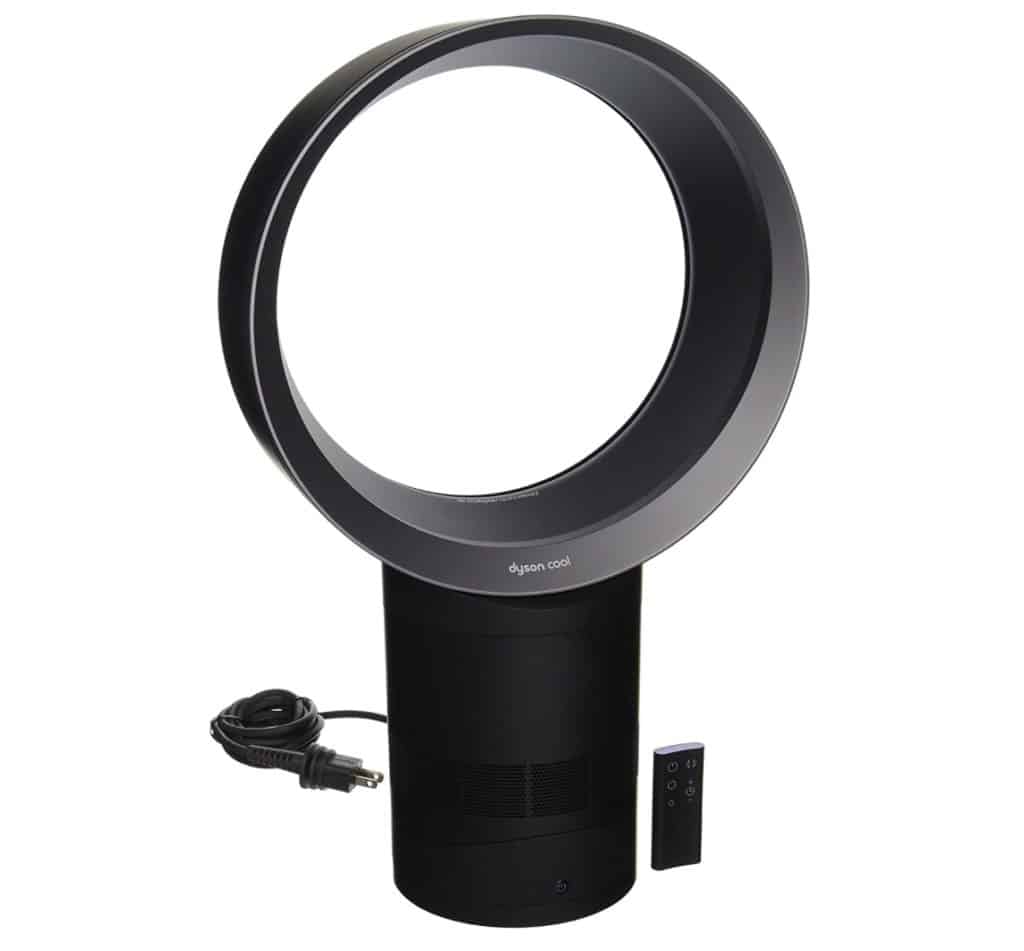
Dyson Air Multiplier
Dyson is the company most closely associated with the bladeless fan design and, having owned at least 5 of these fans, I can say they are very, very good.
The Dyson is one of our favorite quiet fans, but also an iconic bladeless design. I think we probably all know about the Dyson fan and its positive qualities — quiet operation, no need for frequent cleaning, safety around kids and pets, and so on, but there is a lot more to it.
For example, not everyone knows that is has a remote control that magnetically sticks to the top or that is has sleep timer settings, so you can have the fan turn off by itself after as little as 15 minutes or as long as 9 hours. You might also not know that the fan has a 2-year warranty or that is has 10 speed settings so you can find the perfect speed (3 is rarely enough). Also, it has oscillation built into the base, something many bladeless fans are lacking.
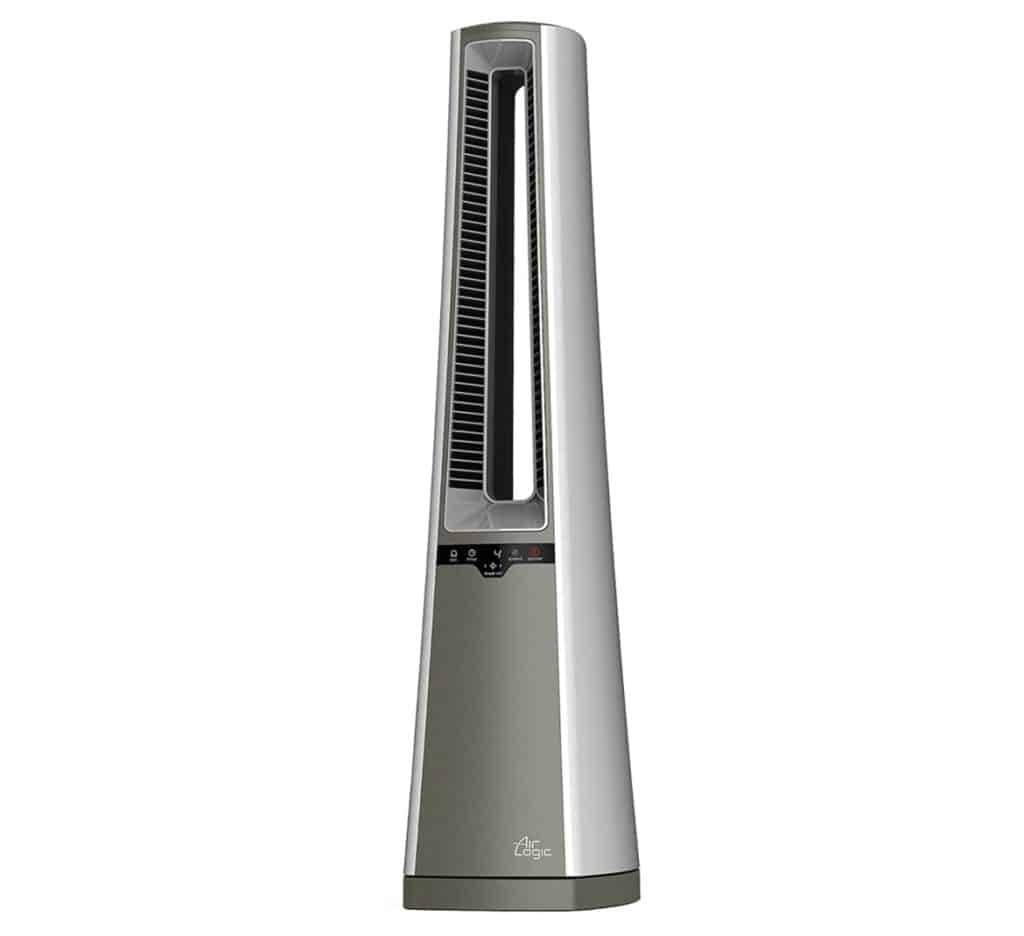
Lasko AC600 Air Logic Tower Fan
The Lasko AC600 is a tower-style bladeless fan. You can see the telltale ring in the top center, which has the high pressure air outlet surrounding it which pulls air from behind the fan (creating the air multiplying effect).
The AC600 is a well-reviewed tower with a great price point: under $100. This makes it a good deal cheaper than a Dyson while still coming from a trusted brand. Lasko makes many very good fans as well as heaters. I have owned a number of their box fans and have always been happy with their performance and price point.
One of the best parts of a tower fan is that it replaces width with height. This means the AC600 has a very small footprint (12 x 6) but it’s not even as tall as a typical standing fan, at just 36 inches high.
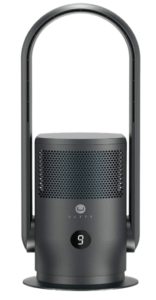
Ultty Bladeless Tower Fan and Air Purifier
It might not come from a brand you are familiar with, but this Ultty design combines an air purifier and fan in one. This is something a few bladeless fans do as it gives the use one added bonus and doesn’t take up any space.
Bladeless fans don’t make very good air purifiers because only a small percentage of the air goes through the filter — most of it is pushes by the cowl at the top in the “air multiplication” process. Even so, enough air is moved through the filter that something like this can have positive effects on a small or moderately sized room like a bedroom or office (up to about 300 square feet). The Ultty has a HEPA filter so you know there will be good capture of dust, pollen, pet dander, and other allergens.
This fan is EnergyStar certified and CARB compliant.
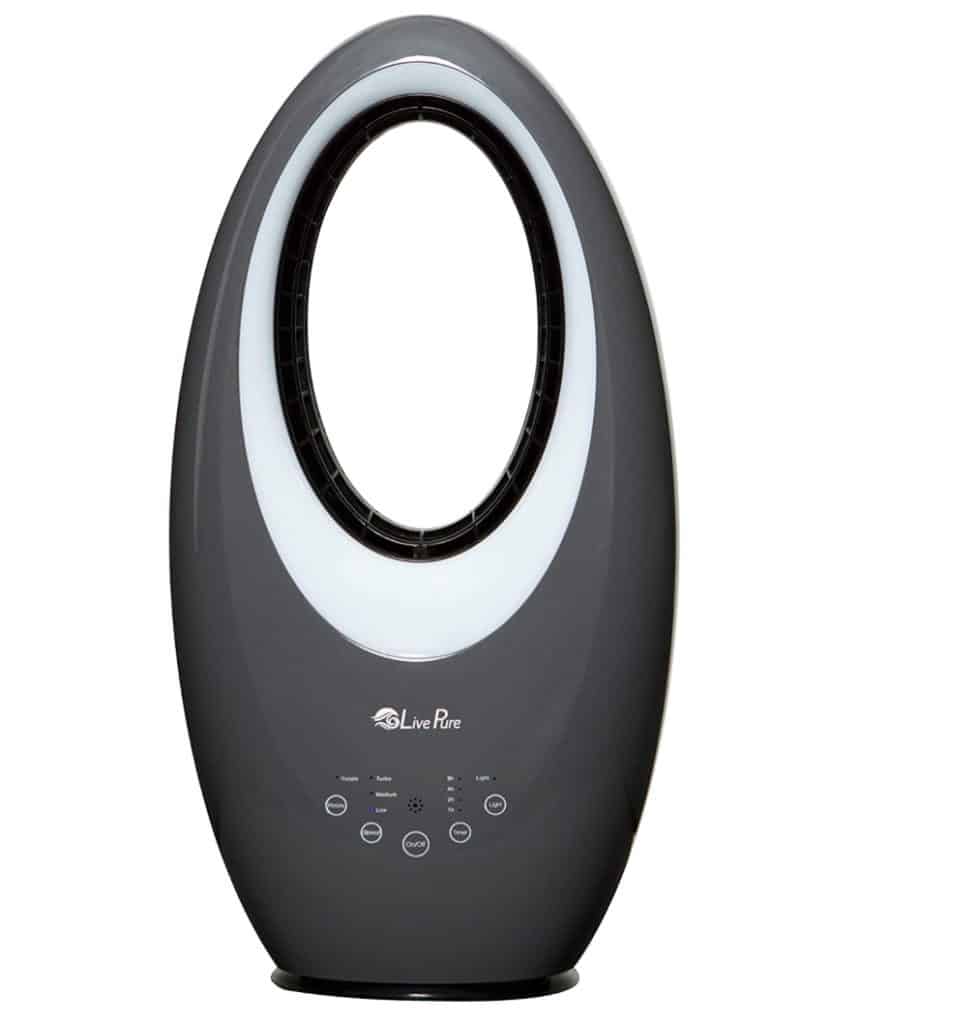
LivePure Bladeless Air Filter
If you are looking for something a bit more futuristic and curvy, there is the LivePure Bladeless. Known as the “Auto-Duster” this small appliance has three settings (low, medium, turbo) and a built-in timer so it can run while you sleep and turn itself off.
This model has a carbon filter for capturing allergens and smells in the room, but the coolest feature is a built-in LED light, so it’s not just an oscillating fan and filter, but also a statement piece with an accent light that toggles between white, purple, blue and green.
Not the most conventional pick for a fan, but a cool, fun option nonetheless.
Are Bladeless Fans Any Good?
If you’ve ever stood by a bladeless fan you’ll know they are quite effective. Typically they don’t have as much power as a conventional fan, but they are quieter, they look better, and they require less cleaning.
Bladeless fans are also great because they are safe around pets and children, with all the moving parts hidden well away from anyone nearby.
One great feature of bladeless fans that not a lot of people know about is that they provide a very smooth, steady flow of air. Blades chop at the air, pushing it toward you one blade at a time. Bladeless fans are like a smooth stream of air the is more consistent, and more steady, which is one reason why bladeless fans tend to be quieter and less disruption than traditional fans.
So, yes, bladeless fans are quite good, though the quality will vary with the manufacturer.
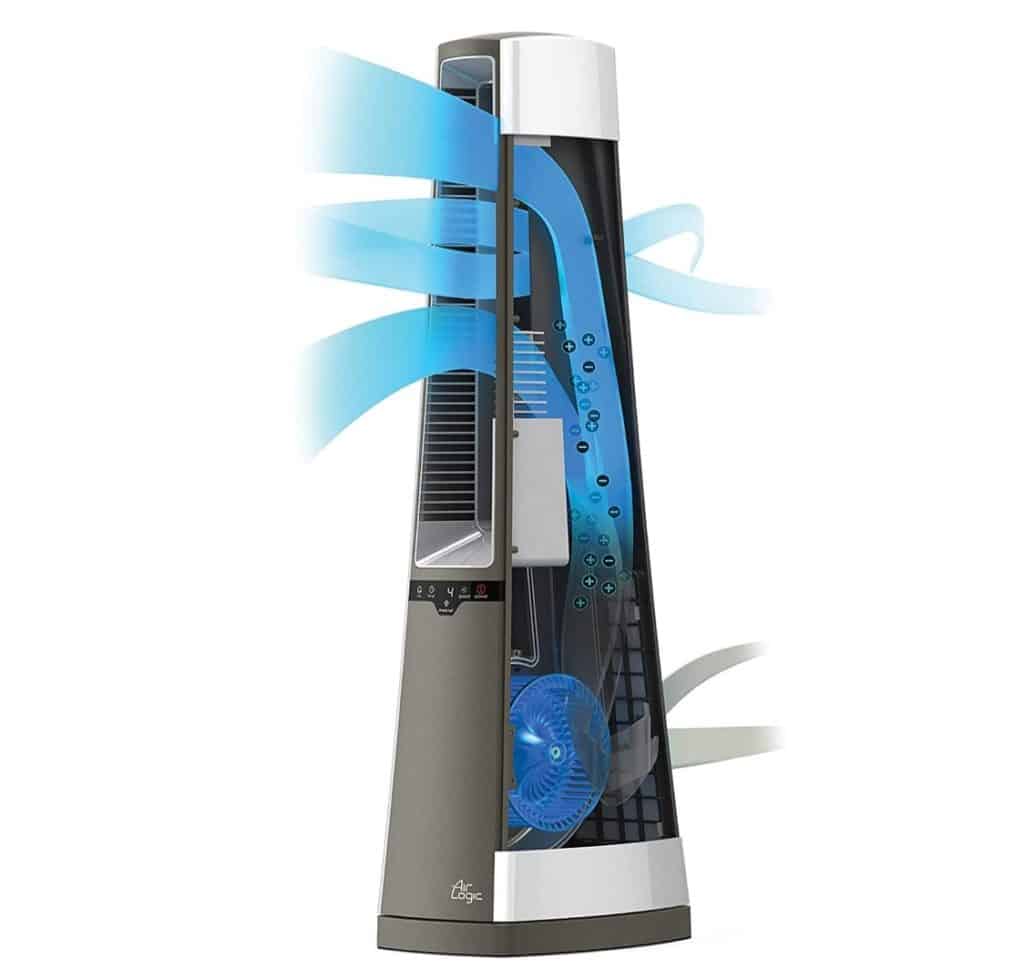
How Do Bladeless Fans Work?
A traditional fan has a set of blades — usually five — in a grate that spin in order to push or pull air. This design works fine, but it looks old fashioned and it opens the door to things getting caught in the spinner blades.
Bladeless fans work by pushing air out of a narrow slit and over a curved surface, usually in some sort of large, open ring design. The air rushes out of this narrow slit, gains speed, and pulls other air along with it, turning a small amount of high pressure air into the gentle cooling breeze you want on a hot summer day. This whole concept work similar to an aircraft’s wing, but it pushes air out instead of providing lift to a plane.
Bladeless fans have no external blades, but inside the fan’s body there is a motor and some form of compressor that pulls in air and then pushes it out through that narrow slit in the ring piece at the top. This is why they are technically called “air multipliers,” because they have a turbine like compressor inside that technically has fins which act like blades.
Tower Fans vs. Bladeless Fans
Many bladeless fans can truly be considered bladeless because they have a turbine inside which has blade-like fins but are not actually blades. Others, like many tower fans, don’t have visible blades, but they have smaller fans inside, so they might look bladeless but they technically are not.
Other tower fans can actually be bladeless because they use an air multiplier design. This would include designs like the Lasko AC600.
There are other more traditional tower fans that the manufacturers sell as being bladeless, but we don’t agree. They simply have very large, long, internal blades, but seem to be conventional fans nonetheless.
A top-seller and ideal example of these is the TaoTronics standing fan, which is sold as being a bladeless fan, but we see it as simply being a standing or tower-style fan.
Downsides of Bladeless Fans
While blades fans are pretty great, they aren’t perfect. Here are some disadvantages…
- Less maximum airflow then traditional designs
- Hard to take apart and service because the inside are more complex than a standard fan
- More expensive than conventional fans
- They don’t get that big (there are no bladeless ceiling fans for homes)
- Not a good fit for contemporary to period home designs (they tend to look ultra-modern)
- Smaller selection than standard fans
Hopefully you now fully understand your next fan purchase. If you have any questions or comments please do reach out!

